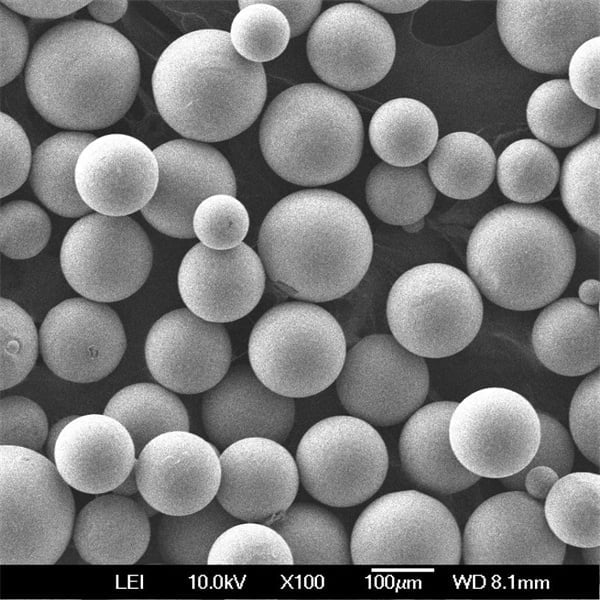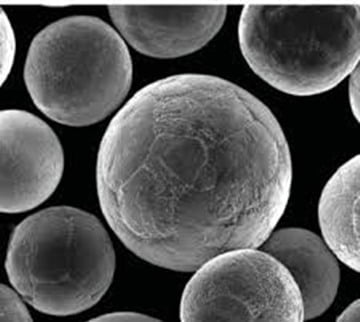Metal alloy powders may sound like something out of a sci-fi movie, but they are very much a part of our everyday reality. From the high-performance parts in aerospace engineering to the intricate details in 3D-printed jewelry, these tiny particles play a colossal role in various industries. Let’s dive deep into the world of metal alloy powders, explore their types, uses, and the magic they bring to manufacturing.
Overview of Metal Alloy Powders
Metal alloy powders are finely divided metal particles that are used in various manufacturing processes. These powders can be made from different metals, each offering unique properties that make them suitable for specific applications. The production of these powders involves sophisticated techniques such as atomization, reduction, electrolysis, and mechanical alloying.
Types of Metal Alloy Powders
Here’s a look at some common types of metal alloy powders, their compositions, and their properties:
| Type of Metal Alloy Powder | Composition | Properties | Applications |
|---|---|---|---|
| Stainless Steel Powder | Iron, Chromium, Nickel | Corrosion-resistant, high strength | Medical devices, automotive parts |
| Aluminum Alloy Powder | Aluminum, Copper, Magnesium | Lightweight, high thermal conductivity | Aerospace components, electronics |
| Titanium Alloy Powder | Titanium, Aluminum, Vanadium | High strength-to-weight ratio, biocompatible | Aerospace, medical implants |
| Nickel Alloy Powder | Nickel, Chromium, Iron | Heat-resistant, corrosion-resistant | Turbines, nuclear reactors |
| Copper Alloy Powder | Copper, Zinc | Excellent electrical conductivity | Electrical components, heat exchangers |
| Cobalt Alloy Powder | Cobalt, Chromium | Wear-resistant, high-temperature strength | Orthopedic implants, cutting tools |
| Iron Alloy Powder | Iron, Carbon | High magnetic properties | Automotive parts, magnetic materials |
| Bronze Powder | Copper, Tin | Wear-resistant, good machinability | Bearings, bushings, sculptures |
| Brass Powder | Copper, Zinc | Good corrosion resistance, aesthetic appeal | Decorative items, electrical contacts |
| Zinc Alloy Powder | Zinc, Aluminum, Copper | Good casting properties, low melting point | Die casting, galvanized coatings |

Properties and Characteristics of Metal Alloy Powders
The properties of metal alloy powders depend on their composition and the method of production. Here are some key characteristics to consider:
| Property | Description |
|---|---|
| Particle Size and Shape | Influences flowability, packing density, and surface area |
| Purity | Affects the material’s performance and final product quality |
| Density | Determines the strength and durability of the final product |
| Flowability | Important for processes like 3D printing and powder coating |
| Compressibility | Affects the ease of forming and sintering of the powders |
| Thermal Conductivity | Crucial for applications requiring heat dissipation |
| Electrical Conductivity | Important for electrical and electronic applications |
| Corrosion Resistance | Essential for products exposed to harsh environments |
| Mechanical Strength | Determines the load-bearing capacity of the final product |
Applications of Metal Alloy Powders
Metal alloy powders are used in a wide range of applications across various industries. Here’s a breakdown of some of the most common uses:
| Application | Industry | Example Uses |
|---|---|---|
| 3D Printing | Manufacturing, Healthcare | Prototyping, custom implants, intricate designs |
| Powder Metallurgy | Automotive, Aerospace | Engine components, structural parts |
| Thermal Spraying | Maintenance, Repair | Coatings for wear resistance and thermal protection |
| Metal Injection Molding | Consumer Goods, Electronics | Small, complex parts like gears and connectors |
| Additive Manufacturing | Various Industries | Rapid prototyping, custom parts |
| Hot Isostatic Pressing (HIP) | Aerospace, Oil & Gas | Densifying and strengthening high-performance parts |
| Sintering | Various Industries | Producing dense and strong components |
| Filtration | Environmental, Industrial | Filters for liquids and gases |
| Catalysts | Chemical Processing | Catalysts for chemical reactions |
| Electronics | Electrical Engineering | Conductive inks, circuit boards |
Specifications, Sizes, Grades, and Standards
When selecting metal alloy powders, it’s important to consider the specifications, sizes, grades, and standards that meet your needs. Here’s a detailed look:
| Specification | Description |
|---|---|
| Particle Size Distribution | Ranges from nanometers to micrometers, depending on the application |
| Purity Levels | Can range from 99% to 99.99%, affecting performance and cost |
| Grades | Specific to each alloy, e.g., 316L for stainless steel, Ti-6Al-4V for titanium |
| Standards | ASTM, ISO, and other industry-specific standards ensure quality and consistency |






Suppliers and Pricing Details
The cost of metal alloy powders can vary widely based on the type, purity, and supplier. Here’s a snapshot of some leading suppliers and their pricing:
| Supplier | Metal Alloy Powders | Price Range (per kg) | Additional Information |
|---|---|---|---|
| Höganäs AB | Stainless Steel, Iron Alloys | $20 – $50 | Global leader in powder metallurgy |
| Carpenter Technology | Titanium Alloys, Nickel Alloys | $100 – $300 | Specializes in high-performance materials |
| Sandvik | Aluminum Alloys, Cobalt Alloys | $50 – $150 | Offers a wide range of metal powders |
| GKN Powder Metallurgy | Iron, Bronze, Copper Alloys | $15 – $45 | Focuses on automotive and industrial applications |
| Kennametal | Tungsten Carbide, Cobalt Alloys | $200 – $500 | Known for wear-resistant materials |
| Praxair Surface Technologies | Nickel, Titanium Alloys | $120 – $400 | Offers thermal spray powders and coatings |
Pros and Cons of Metal Alloy Powders
Choosing the right metal alloy powder can be a bit of a balancing act. Here are the advantages and disadvantages to consider:
| Pros | Cons |
|---|---|
| Versatility | Can be used in a variety of manufacturing processes |
| Customizability | Tailored properties for specific applications |
| Efficiency | Reduced waste compared to traditional manufacturing |
| High Performance | Superior mechanical and thermal properties |
| Expensive | Can be cost-prohibitive for some applications |
| Processing Challenges | Requires specialized equipment and expertise |
| Quality Control | Maintaining consistency can be difficult |
| Availability | Some powders may have limited suppliers |
Technical Parameters and Thresholds
Here’s a deeper dive into some technical parameters and thresholds for metal alloy powders:
| Parameter | Threshold/Range |
|---|---|
| Particle Size | 1 – 200 micrometers |
| Purity | 99% – 99.99% |
| Flow Rate | 25 – 100 seconds per 50g |
| Bulk Density | 2.5 – 8.0 g/cm³ |
| Tap Density | 3.0 – 8.5 g/cm³ |
| Oxygen Content | < 0.2% |
| Surface Area | 0.1 – 5.0 m²/g |
Comparison of Metal Alloy Powders
Let’s compare some popular metal alloy powders to understand their advantages and limitations better:
| Metal Alloy Powder | Advantages | Disadvantages |
|---|---|---|
| Stainless Steel Powder | Excellent corrosion resistance, high strength | Relatively expensive, high density |
| Aluminum Alloy Powder | Lightweight, good thermal conductivity | Lower strength compared to other alloys |
| Titanium Alloy Powder | High strength-to-weight ratio, biocompatible | Very expensive, challenging to process |
| Nickel Alloy Powder | Excellent heat resistance, corrosion resistance | High cost, difficult to machine |
| Copper Alloy Powder | Superb electrical conductivity, good thermal properties | Susceptible to oxidation |
| Cobalt Alloy Powder | High wear resistance, maintains strength at high temperatures | Expensive, limited suppliers |
| Iron Alloy Powder | Cost-effective, good mechanical properties | Prone to rust without proper coating |
| Bronze Powder | Good wear resistance, easily machinable | Lower strength compared to steel |
| Brass Powder | Good corrosion resistance, aesthetically pleasing | Lower mechanical strength |
| Zinc Alloy Powder | Good casting properties, low melting point | Not suitable for high-temperature applications |

FAQ
| Question | Answer |
|---|---|
| What are metal alloy powders? | Finely divided metal particles used in manufacturing processes for producing high-performance parts. |
| How are metal alloy powders made? | Through techniques like atomization, reduction, electrolysis, and mechanical alloying. |
| What industries use metal alloy powders? | Aerospace, automotive, healthcare, electronics, and more. |
| What are the benefits of using metal powders? | They offer versatility, efficiency, and high performance for various applications. |
| Are metal alloy powders expensive? | Costs can vary widely based on type and purity but can be higher than traditional materials. |
| Can metal alloy powders be recycled? | Yes, many metal powders can be recycled, reducing waste and environmental impact. |
| What is the difference between atomized and reduced powders? | Atomized powders are made by breaking molten metal into droplets, while reduced powders are made by reducing metal oxides. |
| What are the safety considerations when handling metal powders? | Proper ventilation, protective gear, and handling procedures are essential to prevent inhalation and fire hazards. |
| How do I choose the right metal powder for my application? | Consider factors like mechanical properties, thermal and electrical conductivity, corrosion resistance, and cost. |
Conclusion
Metal alloy powders are the unsung heroes of modern manufacturing, offering unparalleled versatility and performance across numerous industries. Whether you’re crafting a high-strength aerospace component or an intricate piece of jewelry, these powders are the secret sauce that makes it all possible. By understanding the types, properties, applications, and nuances of metal alloy powders, you can make informed decisions that drive innovation and excellence in your projects.
Remember, the world of metal alloy powders is vast and ever-evolving. Stay curious, stay informed, and never stop exploring the endless possibilities these tiny particles have to offer. Happy manufacturing!
About 3DP mETAL
Product Category
CONTACT US
Any questions? Send us a message now! After receiving your message, we will process your request with a whole team.
